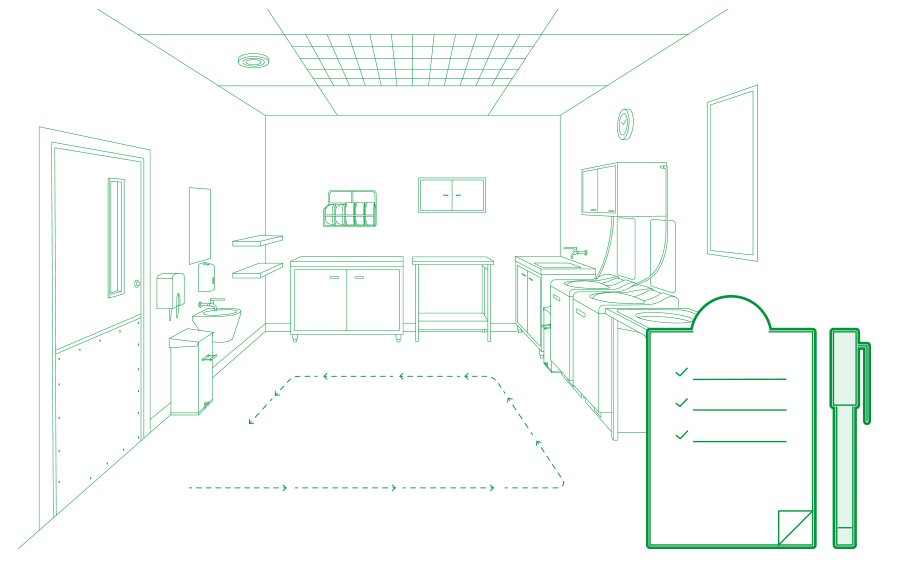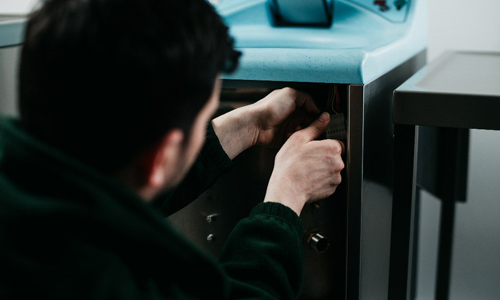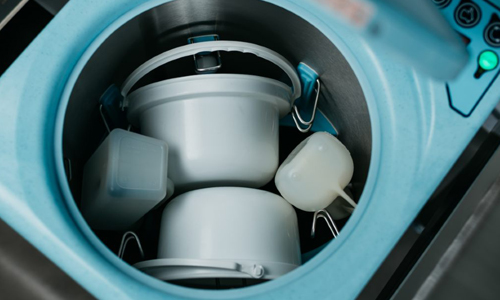The Ultimate Sluice Room Checklist
Whether for a hospital, a care home or a special needs school, your sluice room or human waste disposal area must be well-planned and adequately stocked in order to remain sanitary.
In the fight against HCAIs, very little is more important than good hygiene. When it comes to disposing of human waste, having your sluice room in good order is a top priority.
Waste management can make or break your infection control strategy. If you can’t remove it from the area safely, the whole facility is in trouble; both your clinicians and patients will be exposed to a potentially devastating health risk, while the facility itself must struggle to regain control after the outbreak. This can result in a severely damaged reputation, an extremely stretched budget to cover associated costs and, most seriously, potential loss of life.
What’s the best way to plan a sluice room’s layout and inventory?
If you’re building a new sluice room from scratch, DDC Dolphin offer expert design services for architects and contractors.
They’ll ensure that you maximise the space available, as well as creating a safe and efficient flow between task areas to minimise the risk of spreading bacteria.
In addition, you can be confident that your new facility will have all the right provisions, as well as meeting critical government guidelines.
There are also some absolutely essential sluice room features to include.
In order to be confident in your layout, you’ll need to consider the fundamental fixtures and fittings which make the sluice room work, as well as keeping it watertight against infection and cross-contamination.
Here’s our recommended list.
1. Disposal/Slop Hopper
Filling the gap when you need a back-up disposal method, slop hoppers are a practical piece of insurance, as well as providing day-to-day convenience for custodians who need to fill and empty buckets. In addition, a slop hopper can safely collect dirty items as a temporary measure, until the necessary cleaning point is available.
2. Washer Disinfector
Many facilities have a stock of reusable bedpans, urine bottles and commode pots which need regular cleaning. For these items, washing by hand really shouldn’t be an option; not only is it an unpleasant practice, but a dangerous one, too.
To keep your clinicians and patients safe from infection, be sure to sanitise reusable items in a washer disinfector.
3. Pulp Macerator
If your clinicians rely on re-usable pulp products in order to manage the toileting needs of patients, a pulp macerator is a must.
Using a series of blades to pulverise waste and pulp products into a fine slurry, the macerator then disposes of the remnants through the normal sewerage system. The whole process takes just a couple of minutes, with no unnecessary exposure to the clinician, or unpleasant odours in the environment.
When it comes to the challenging process of human waste disposal, maceration is unparalleled in regard to preventing infection.
4. Foot-Operated Clinical Waste Bin
Hands are a common vessel on which bacteria can spread; for this reason, items with hands-free operation are always of preference. A bin which opens by pushing a foot-pedal will provide a safe way to discard of items such as gloves and aprons, without touching any surfaces.
5. Deep Stainless Steel Sink
Ideal for everyday washing and rinsing purposes, a sink that is deep enough to prevent splashing is essential. In addition, stainless steel is easy to clean and robust, which makes the fight against infection far simpler.
6. Storage Cupboards
Sluice rooms must be kept scrupulously clean. It’s important not to allow the area to become cluttered, or it’ll provide crevices where bacteria can hide. By fitting storage cupboards, your necessary utensils can be kept tidy and sanitary.
7. Work Surfaces
When your clinicians need a temporary spot to store clean and disinfected items, a work surface can provide a safe and hygienic space.
8. Wall-Mounted Rack
Handy for if you need to dry your re-usable utensils, a wall-mounted rack will make sure they stay clean and tidy in a busy sluice room.
9. Shelving
Perfect for busy wards, shelving will provide easy storage for items such as medical pulp products.
10. Liquid Soap Dispenser
With hand washing being so integral to an effective infection control procedure, it’s only sensible to include as many opportunities to do this as possible. Liquid antibacterial soap will make it easy for your clinicians to be thorough.
11. Stainless Steel Handwash Basin
Separate to your deep sink, a handwash basin should be placed next to the sluice room door, making it easy for clinicians to wash their hands before and after dirty tasks, and making sure they’re sanitised before going back to the ward.
12. Paper Towel Dispenser
Hands should be fully dried after washing. A paper towel dispenser will make sure that your clinicians are able to do so efficiently.
13. Pedal Bin
Keep your sluice room tidy by providing a rubbish bin for non-clinical waste. This should be placed near the handwash basin to facilitate disposal of paper towels.
14. Fire Door
It’s worth checking your local regulations, but fire doors are often recommended in clinical settings. Make sure they have a stainless steel coating so they can be cleaned easily.
15. Sealed Floor Covering
Generally made of vinyl, smooth floor coverings make spillages easy to clean up.
16. Tiled or Aseptic Laminate Walls
A sluice room needs all-round cleaning. Walls that can be easily sanitised are a must.
17. Extractor Fan
Waste products, by nature, often have an unpleasant odour. An extractor fan will keep your sluice room pleasant for clinicians, while simultaneously encouraging laminar flow.
18. Lighting
Every room needs a light source, but for a sluice room, a sensor-operated lighting system will help prevent the spread of infection by unnecessary touch. An energy-efficient solution will keep costs low, too.
Take a look at our infographic to see the optimal sluice room layout in practice.
DDC Dolphin can help you to make informed choices about sluice room planning and equipment.









